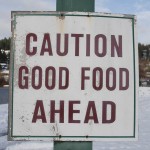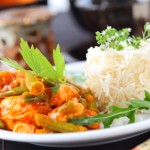Two recent articles in The New York Times caught my attention and highlighted a marked disparity between China, the most populous country in the world, and the United States, third in the global population list, but with a markedly differing approach to many problems.
To begin with, I knew who was in first, second and third place for the greatest number of residents (citizens and others), but was curious to see who followed so I Googled "countries with the largest population" and found the numbers on an unexpected website (I suppose I shouldn't have been surprised). As of July, 2013, the CIA's listing on their webpage, The World Factbook, says China has a hair under 1.35 billion people, India has 1.22 billion, the entire twenty-eight-country European Union (that number of members is also as of July, 2013) has just over half a billion and America has 316 million. They are followed by Indonesia at 251 million, Brazil slightly over 200 million and Pakistan at 193 million. The other countries with over 100 million inhabitants are Nigeria (175 million), Bangladesh (163 million), Russia at 143 million, Japan with 127 million, Mexico with 116 million and the Philippines with nearly 106 million.
When it comes to land area, Russia clearly leads the pack with over 6.6 million square miles; Canada is second with 3.8 million square miles and somewhat surprisingly to me the United States is third with 3.7 million, slightly over China's size (Alaska with 586 thousand square miles of land is the reason). But China's population density (365 per square mile) is more than four times that of America's (84 per square mile).
A significant question is what information is available to people in various countries and what influence do they people on decisions that may affect their health and that of their children. I'm going to stick to China and the United States, but I think I could probably extrapolate to a number of others in the over 100 million population group.
The NYT article about China, written by Edward Wong, was titled "Pollution Rising, Chinese Fear for Soil and Food" It's datelined from a village in Hunan Province, the breadbasket of China. Crops raised in the eastern and southern parts of the country include rice, yams, carrots, turnips, cabbage and lotus, while millet, corn and soybeans predominate in northern and northeast areas. Other major crops include sorghum, barley, tea, cotton and peanuts.
The Hunan village mentioned in the story grows rice, sweet potatoes, turnips, carrots and cabbage. The problem is the fields on which these crops are produced are far too close to industrial plants; many factories, smelters and mines surround them and the wastewater from those plants is toxic. In May, 2013, officials in Guangdong Province, in the far south, said they had discovered excessive levels of cadmium in 155 batches of rice collected from markets, restaurants and storehouses. Of those well over half were from Hunan Province.
On December 30, 2013, the Chinese Vice Minister of Land and resources, Wang Shiyuan, said an area about the size of Belgium, (or Maryland, about 12,000 square miles) but comprising only 2% of China's 135 million hectares (roughly 520,000 square miles) of arable land, was too polluted for growing crops safely. And early in 2013 Wang's ministry had commented that a five-year, $1 billion soil-pollution survey's resulted were being held as a "state secret." This came out in Bloomberg News online along with a comment from Minister Wang, "Farming on the land with medium-to-heavy pollution should be discontinued."
One-sixth of China's rice is produced in Hunan Province, but so is much of its cadmium, chromium, lead and non-metal arsenic.
A Chinese official admitted the pollution was due to intense industrial development, but also mentioned three other factors I thought were much less likely to be involved (chemical fertilizers, mechanized farming and household garbage).
Cadmium's effects have been studied in detail in those exposed to inhalation of the metal: they include lung, kidney, bone and reproductive changes. Ingested cadmium is exceedingly toxic to those same systems of the body.
Although the total arable land in China has increased in the last survey, the per capita figure has shrunk secondary to both population growth and a quickening pace of urbanization. Nearly eleven thousand square miles of previous farmland has been converted into portion of cities since a 1996 survey. China's per capita arable land, 135.4 million hectares at the end of 2012 , translates into 0.101 hectares per person, far under the world's average of 0.225. The redline figure for China at its present population is 120 million hectares reserved for agriculture; below that, even at their present population, they would be unable to produce enough food crops for all.
But toxic chemicals aren't the only Chinese food issue. A January 2, 2014 BBC article, "Donkey Meat Recalled in China," It's apparently a common snack food there, but the Wall-Mart corporation said that government testing revealed that two of its stores in an eastern area of the country (Shandong province) had sold product contaminated with fox meat.
Wall-Mart plans to reimburse customers who purchased the donkey meat and upgrade its own DNA testing.
Chinese consumer confidence has plummeted since the melamine scandal of 2007-2008. Initially pet food contaminated with an industrial compound and exported to the United caused kidney failure in dogs and cats. Then infant formula, frozen yogurt and one brand of a canned coffee drink in China itself caused six infant deaths and sickened at least 300,000 people. A February 2013 Huffington Post article gave a followup on a theory of why so few died. About 1% of humans have a gut bacteria that metabolizes melamine into a more toxic chemical. So, if that concept is correct, China was very lucky.
Think of the numbers sickened and killed if that microbial species had been present in most of their population.
There is some very good news coming from China as well, however. The world's largest genomics corporation, started as the Beijing Genomics Institute in 1999 and now called B.G.I., is carrying on major projects to unravel the genetic structure of thousands of economically and scientifically important animals and plants with one goal being applying the knowledge gained to better treat or even prevent diseases.. A January 6, 2014 article in The New Yorker titled "The Gene Factory" featured B.G.I. and our former Chinese graduate student (now with a Pharmacology PhD from the University of Colorado) spoke highly of the work of one of its leading figures.
B.G.I. is collaborating with the Bill and Melinda Gates Foundation and major American universities to increase global food production by ten percent. It's is also sequencing the genes of rice, cucumbers and chickpeas.
So there's both bad and some good food safety news coming from the world's most populous country. But the majority of its people are kept in the dark as to the extent of the problems.
There's hope in sight: in early 2013 the Chinese State Council set a 2015 goal for measuring soil pollution comprehensively and establishing initial programs for treating those injured by unsafe agricultural products.
Hopefully they will let their citizens know the results of the survey.





